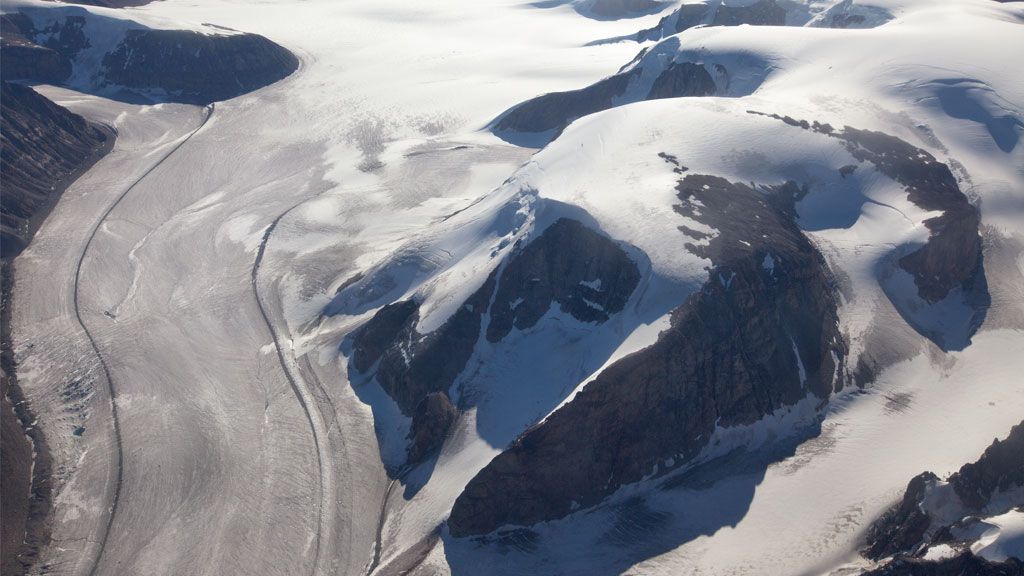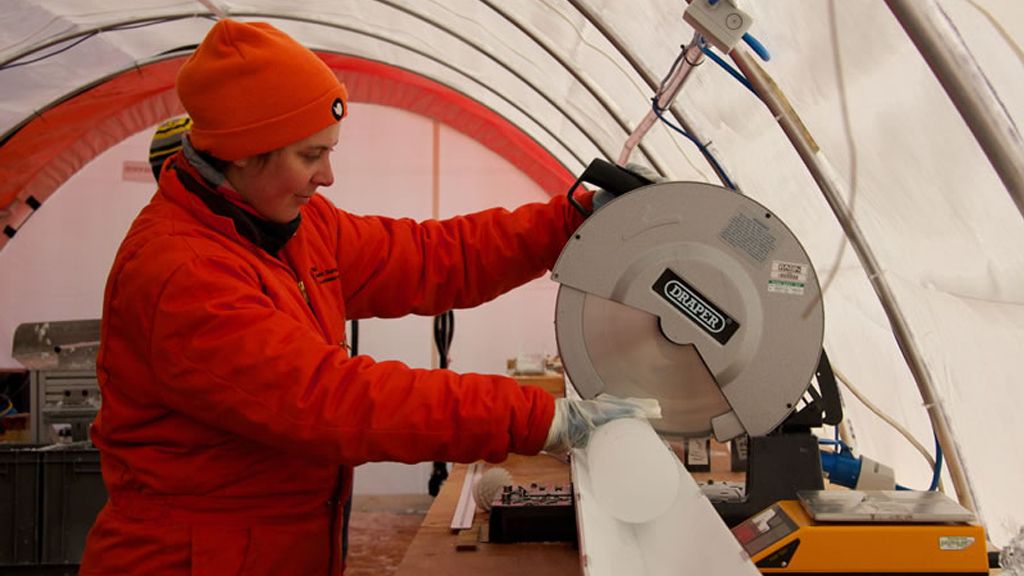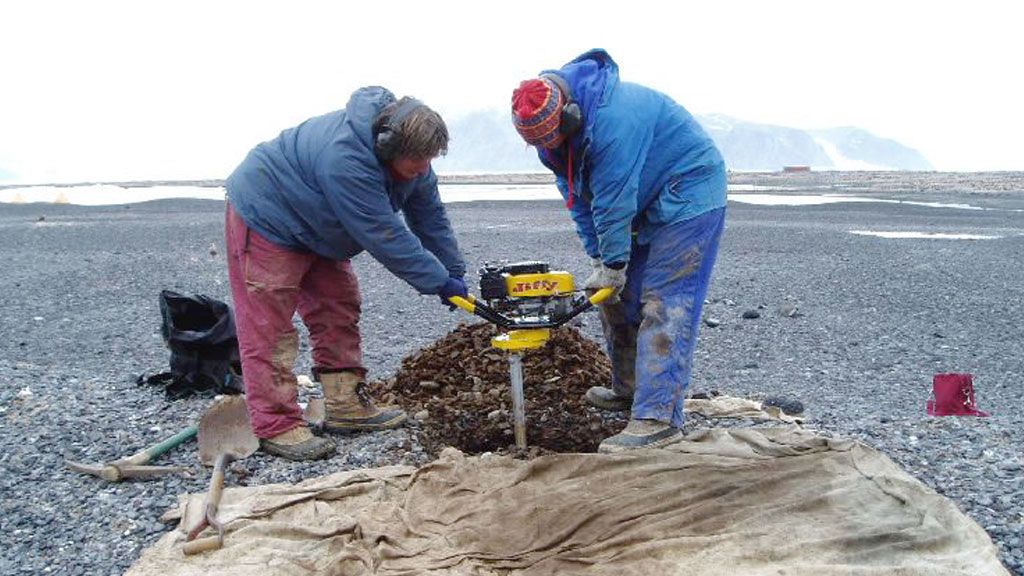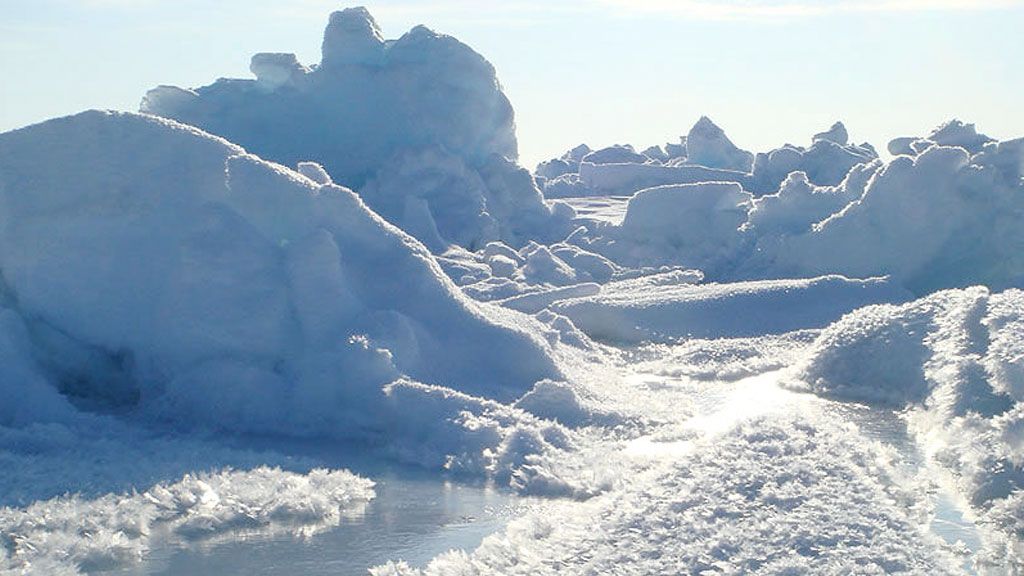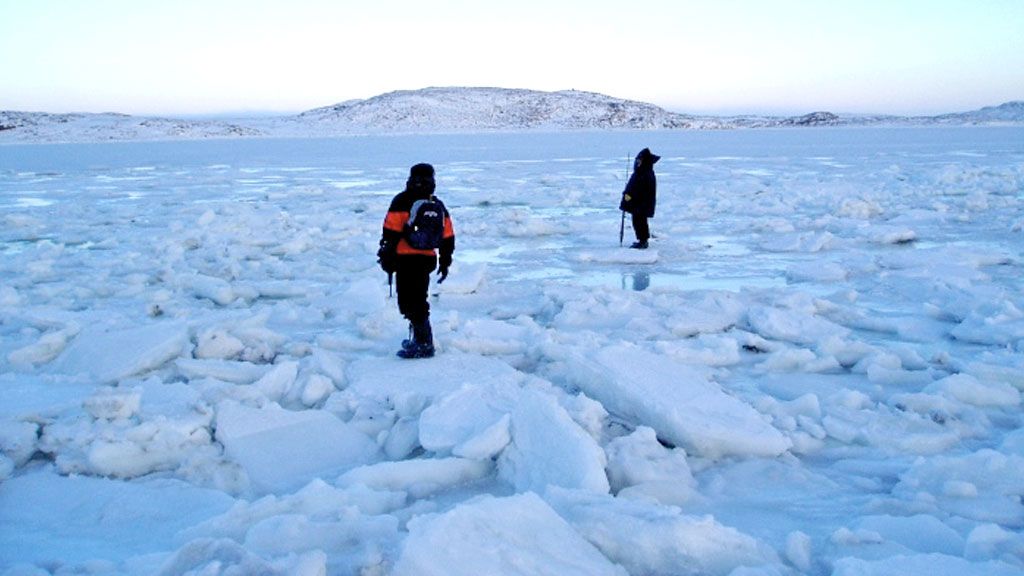Future impacts of climate change in the Arctic
Glacier from the air
© GRID-Arendal - Lawrence Hislop
Professor Oleg Anisimov is Head of the Climatology Department at the State Hydrological Institute of Roshydromet, located in St Petersburg, Russia. His research focuses on the impacts of climate change in high latitudes, especially regions of Arctic permafrost. The IPF met Dr. Anisimov at the Intergovernmental Panel on Climate Change (IPCC) press conference held in Brussels. A Coordinating Lead Author of Chapter 15 on Polar Regions for Working Group II, he responded to our questions concerning the outcome of the discussions and the future implications to be expected in the Arctic due to climate change.
According to Professor Professor Vaughan of the British Antarctic Survey (BAS), the other coordinating lead author of Chapter 15 in Workinggroup II, the 4th IPCC Assessment Report (AR4) focuses on specific areas of research in the Polar Regions, more so than the 3rd IPCC Assessment Report (AR3) did. Why were certain issues emphasised over others, and how were these issues of concern decided?
The goal of the AR4 was not to repeat the previous assessment but to (a) fill the gaps that were in AR3, and (b) update the results, where new knowledge had appeared since AR3. But this is true for all chapters of the report, not just for the Polar Regions, and it explains why some issues were emphasised over others.
Comparing our chapter to AR3, I must say that this time we focused more on the Arctic than on the Antarctic, a fact noted by several reviewers. The reason for this is that since AR3, much more research has been conducted and we have obtained more results in the Arctic than in the Antarctic. In this report (AR4), we have a much better representation of the terrestrial ecosystems. We also tried to assess the socio-economic consequences of climate change in the Arctic, which were insufficiently covered in AR3. There were thus no preferences in selecting specific issues to be addressed in our chapter. We tried to make a comprehensive report addressing on one hand the wide range of climate change impacts occurring in Polar Regions, and on the other to not repeat the AR3 nor the Arctic Climate Impact Assessment report which focused on the Arctic and was published before the IPCC report in 2005.
You mentioned the new land use opportunities climate change would bring about in the Arctic region. Does this reflect an attitude of "Things are changing, so we might as well make the best of it and adapt"? Do you think this attitude could stand in the way of efforts to mitigate climate change?
We live in a dynamic world, and things around us change every day. As far as I'm concerned, it is not a question of whether or not we should make the best of such changes. Certainly we should, and the best and smartest way to do this would be to follow an "educated choice", i.e. based on all available knowledge concerning the ongoing changes. One of the missions of the AR is to provide such knowledge to everyone who needs it, from urban citizens and farmers, particularly those living in polar areas, where projected climatic and environmental changes will be larger than elsewhere in the future, to business communities (insurance, development, transport, energy, etc.), all the way to land use planners and top level decision-makers.
These people may and should benefit from any information pertaining to projected environmental impacts of climate change, such as: (a) increased opportunities for northern agriculture, (b) shifts in water resources within the sub-Arctic regions, resulting from river runoffs which have less pronounced seasonal variations, (c) more navigational northern sea routes due to a reduced sea ice extent and to longer warm periods.
Certainly not all projected changes are favourable: the thawing of permafrost may have serious detrimental impacts on buildings and engineered structures in the northern lands. Furthermore, shorter and less severe winters will shorten the period during which winter trails may be used for transportation and the period suitable for transportation on river ice.
Changes in terrestrial ecosystems, changes in the habitats and in the abundance of wild animals may negatively affect the lifestyles of indigenous people, most particularly their hunting and gathering activities.
With regard to the future consequences climate change is likely to have on the Arctic region, such as the opening of new sea routes and the possibility of new resource exploration, which elements would be "beneficial" and which ones would be "detrimental" to communities within the Arctic region?
The divide between what is "beneficial" and what is "detrimental" is very loose, particularly when talking about the effects that will follow economic and industrial development. Such changes are certainly detrimental to traditional lifestyles of the indigenous peoples that live in the Arctic. However, the question remains whether they are also detrimental to the people, at least as far as most readers understand it.
It is difficult to give a single answer to this question. Many people would say that the projected changes are "pure evil" for indigenous communities, which is true but only in part, because not just climate change, any intervention of the 21-st century civilization into indigenous life may be considered as a detrimental factor.
On the other hand people living in the north have to cope with such changes in their environment, and I believe they have sufficient potential to not just survive, but to preserve the essential elements of their cultural traditions while adapting them to new environments. And knowledge about the ongoing changes facilitates this task.
Do you think the nature of this change in the Arctic could develop into any political conflicts between countries with territory lying within the Arctic region (Russia, USA, Canada), on the short-run or on the long-run? What issues are at stake here?
I am not a specialist in such issues, but I do not see any strong mechanisms which could lead to conflicts relating to climate change between the northern countries, whether it be on the short or the long run.
Climatic warming leads to changes in availability and accessibility of natural resources in northern lands, both on land and in the sea, and while some countries may get some benefits, such as better transportation possibilities along the northern sea routes, others may loose out, due for example to the negative effects of the thawing permafrost on infrastructure of extracting industries. I do not see here any ground for conflict between countries, at least in a "smart world" scenario.
International agreements and treaties constitute the political instruments used within affected countries to achieve a reasonable balance between the benefits induced by climate change and the costs of climate change induced losses... But this is moving out of the natural sciences, in which I have sufficient expertise, and entering the policy making arena.
What, in your opinion, is the future prospect for the indigenous Inuit, knowing that their entire tradition and culture is built on the surrounding land?
I have already answered this. My opinion is that any small group or nation should first of all decide for themselves (a) what is the essence of their cultural traditions, (b) whether or not they are able to keep them unchanged in the changing world, (c) and, if point (b) is not possible, how they should adapt, i.e. which elements of their culture they should preserve prioritarily.
Indigenous people lived in peace with nature for many centuries and have already learned how to adapt to environmental changes that have taken place in the past due to climate variations.
An important mission relying on the other nations is to provide them with the best of knowledge concerning projected changes, being that future changes are likely to exceed those of the past, both in their magnitude and in their rate of occurance. This will allow indigenous people of the Arctic to make an "educated choice" rather than a "blind" step into the future.
The thawing of the permafrost has shown to cause devastating effects within the Arctic region. Which measures is Russia taking to deal with these changes?
I have to say that the thawing permafrost is not something new to northern Russian engineers. Each and every construction in a permafrost region is designed with particular safety factors. These safety factors take into account the weakening of construction foundations, due to the decreased bearing capacity of frozen grounds after climate variations.
The problem is that sustained warming leads to a situation in which the safety factors gradually decrease, meaning that the buildings may become unstable, even under the slightest variation of ground temperature. This is not yet understood by everyone. Some people still think that climate change is something similar to climate variations, and that everything will fall back into place with time, which is certainly not the case.
Fortunately, there are well developed engineering methods that can be used to increase the stability of foundations and to compensate, within certain limits of course, the loss of in bearing capacity of permafrost. (a) Methods such as increasing the number and length of piles supporting the foundations in permafrost, in order to decrease the load carried by each pile, or (b) rather sophisticated methods such as lowering the permafrost temperature by means of a special device known as a "thermosyphone". These methods have been used in many regions and have showed very good results, not only in Russia, but in other countries also having lands underlain by permafrost.
At the moment Russia does not have any federal program that is specifically targeted at mitigating the impacts of the thawing permafrost on infrastructure, although this is an area in which research has already being undergone and in which we have accumulated a lot of practical knowledge. This problem is causing public concern, and we expect such a program to be developed at the federal level within the next few years.
What issues or research areas could be the focus of the next IPCC Assessment Report as far as Polar Regions are concerned? Do you think proving an empirical relationship between climate change and the gradual disappearance of sea ice and ice sheets will be addressed?
I do not think we need to highlight any specific areas of research concerning the Polar Regions in the next assessment report. After all, the IPCC is not a research body and the scientists act as experts who review publications in the literature and who make available their major findings to a variety of people who are interested in the impacts of the changing climate. Traditionally, ARs have focused on issues concerning which we have gaps of knowledge, or those concerning which available research findings were not covered in sufficient detail in preceding reports.
I think the processes involved in the cryosphere, including the changes in sea ice, ice caps, glaciers and permafrost, are relatively well understood, and we do not expect any surprises here. In my view more attention must be paid to the human dimension of changes in the Polar Regions, particularly in the Arctic, which is home to almost 4 million people. This question should include a wide range of problems: from the lifestyles of indigenous people to the economical and demographical problems involved in these regions. Indeed, activities in the region are associated with extracting industries having a very limited lifetime before the natural resources, such as oil or gas fields, come to expire. What will be the future of the people who set up their lives there? Should they move to other places following the advance of industries? To address such questions we will need authors with strong background in social geography on board of the next AR.

Oleg Anisimov
Oleg Anisimov is Head of the Climatology Department at the State Hydrological Institute of Roshydromet, in St Petersburg, Russia. He is interested in the impacts of climate change in high latitudes, and in particular change in permafrost.

